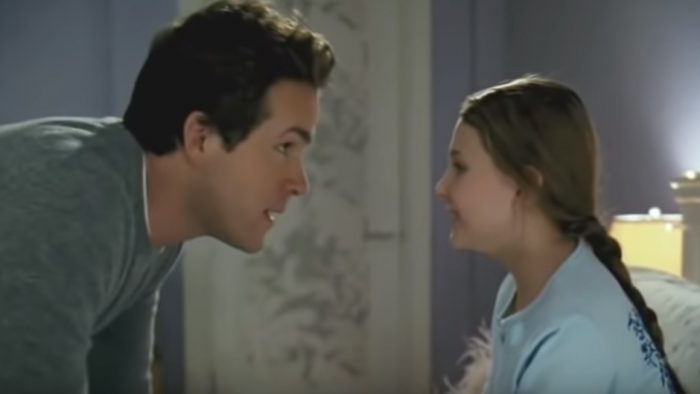My most powerful insights on loving women better have come from my journey to better nurturing my daughter.
It started the day that my young daughter, with her particular hair and how active she is, had some knots in her hair that I could not brute force without causing cries of anguish.
Grooming someone else in a painless way is an immensely patient act. I’d argue that most of us men don’t have the direct experience to know how hard we can pull on long hair before it hurts at the roots.
Lesson 1:
When we are faced with what we perceive as a challenge interacting with a woman, there is likely a gentler and more loving way to respond than the one that first occurs to us, no matter how normal our idea may seem to us.
And there’s plenty more in the process of learning how to detangle or generally care for our daughters’ hair that we, as men and fathers, can learn about how to better love and care for all women.
I’m particularly interested in loving women more wholly as I’ve been separated a year, and recently divorced from my daughter’s mother. I’ve been reflecting a lot recently about how I could have loved her (and myself) better.
We, as fathers, are setting our daughters’ expectations about how a man who claims to love them should treat them. We also teach them how they should take care of themselves by the example of how we take care of ourselves.
“every time you
tell your daughter
you yell at her
out of love
you teach her to confuse
anger with kindness
which seems like a good idea
till she grows up to
trust men who hurt her
cause they look so much
like you” ~ “To Fathers with Daughters,” Rupi Kaur
Speaking from my personal experience—and I think speaking for most men—we don’t know how to care for long hair because we weren’t socialized that way. We were mostly socialized to have short hair in our formative years, so we lack the personal interest in and experience of loving care of long hair. Using long hair as a metaphor for femininity, in learning to care for and tend to it, we men have an opportunity to learn to love women more wholly.
My daughter, for example, is not really perturbed by having messy, tangled hair—at least so long as it doesn’t cause pain. And so the choice to conquer this challenge, to smooth it out is almost all by my own preference. I assume that she will appreciate having her hair detangled, so long as I can do it without causing any discomfort and without slowing her roll.
Lesson 2:
Let’s consider whether the attributes of women we see as needing our help are really all that important to them to “fix” or “take care of,” or this is just us projecting.
We can offer gentle persuasions with opt-outs that can be used at any time, rather than trying to convince or impress our will upon the women we love.
When I looked at it, the end goal was to help my daughter feel awesome through taking care of the hair on her head, just as I feel awesome by shaving the hair on mine. I’m somewhat isolated in terms of spending time with other parents, and don’t have my mom or sister nearby to seek advice, so I’m learning about caring for her hair using the internet and direct experimentation.
My daughter is not often still, except when asleep, so getting her approval to practice combing, brushing, and braiding her hair (despite my begging her stationary audience) is very rare indeed. I have found her requirements of me are to be well prepared with a specific approach, and that I must be fully present with her.
Lesson 3:
We ought to be thoughtful, intentional, and fully present.
I’m not brushing my daughter’s hair and thinking about work. I’m not putting conditioner in her hair in the bath and thinking about dinner. I must place all of my attention on how I’m treating my daughter in that moment. One painful yank on hair will ward her off from chances to try again for days.
There are so many metaphors here for how we men can better verbally and emotionally treat women. Bottom line: we must pay attention. Attention is love.
I was so proud of myself when I realized I was successfully detangling my daughter’s hair without pain—that I had figured out the process at least this once.
It started with a hot bath with a rose petal bath bomb, where I assured her no soap would enter her eyes as I shampooed and conditioned just her long hair in the back.
Lesson 4:
Compromise, understanding, and respect are important!
I used conditioner that women with long hair have told me they like (advice from the experts). She was occupied with toys in the bath as I worked with a comb to unlock the tangles in her conditioner-saturated hair. I wasn’t slowing her roll. And the tangles melted away!
No metaphor here, men, this shows the literal power of a hot bath with a bath bomb and lovingly taking care of a woman while she does whatever else she wants.
There was aftercare, bundling her hair and squeezing out the water, combing and brushing it while she dried off and played with her toys, a hair band to keep her hair in a ponytail as she ran around, and then complete acceptance that she just wanted her hair to be free after all of that.
I’m not sure she thanked me. But it’s not so much about the end result of detangled hair, maintaining it in some pristine state, or getting an imagined sweet “thank you.” It was all a process of…
Lesson 5:
Learning the importance of showing my daughter (and all women) that she is worthy of kindness and patience—the quality of kindness and patience that is required by tenderly removing tangles from a sensitive scalp. In receiving these “lessons,” my daughter unknowingly offered one to me: I came to see that I was capable of providing this type of care and more.
Fellow men, as we treat women more kindly and patiently, without attachment to outcome or our own projections, we inspire others and ourselves in what love can be. And love is what we all deserve.











Read 0 comments and reply